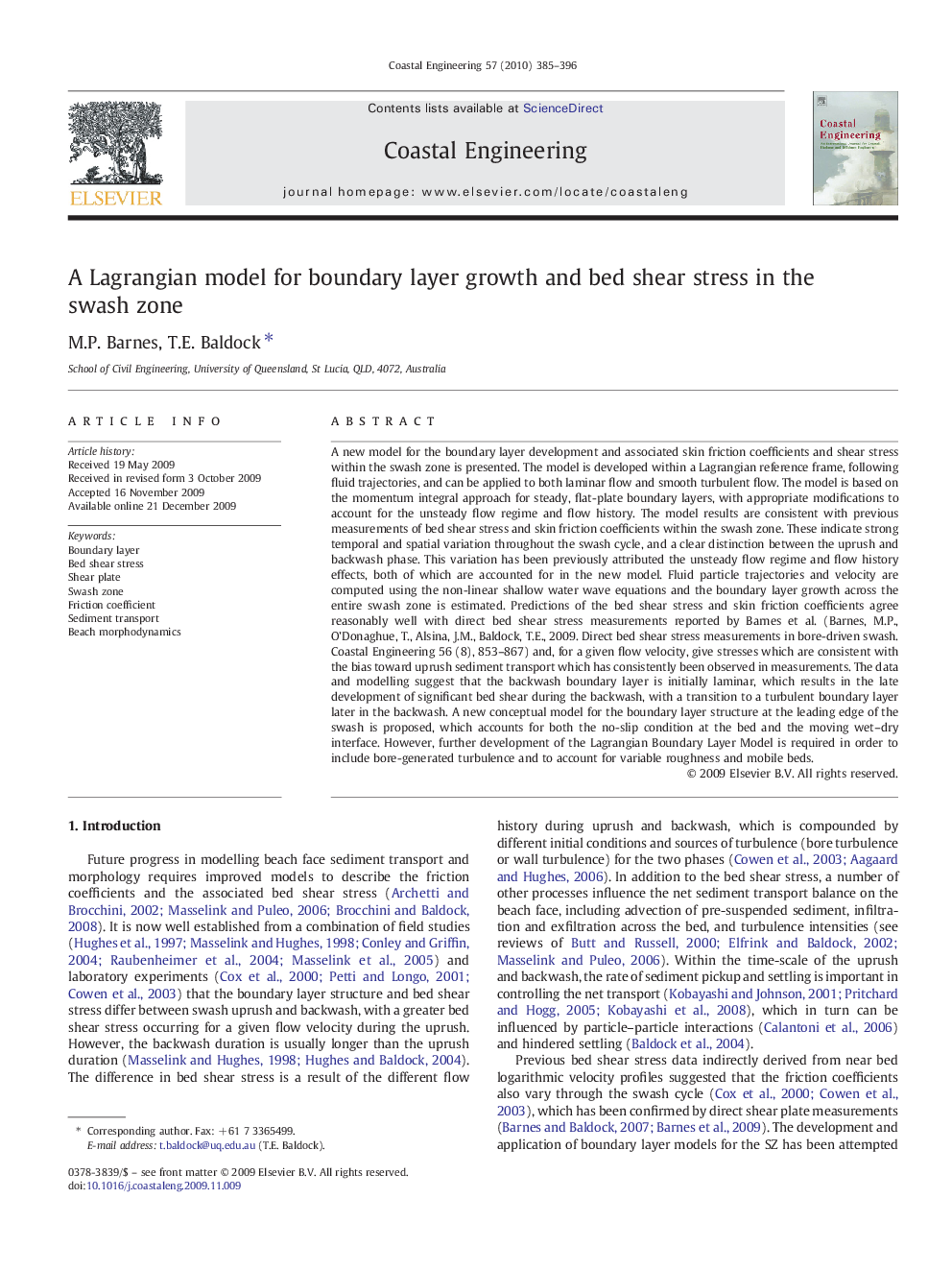| کد مقاله | کد نشریه | سال انتشار | مقاله انگلیسی | نسخه تمام متن |
|---|---|---|---|---|
| 1721377 | 1014487 | 2010 | 12 صفحه PDF | دانلود رایگان |
عنوان انگلیسی مقاله ISI
A Lagrangian model for boundary layer growth and bed shear stress in the swash zone
دانلود مقاله + سفارش ترجمه
دانلود مقاله ISI انگلیسی
رایگان برای ایرانیان
کلمات کلیدی
موضوعات مرتبط
مهندسی و علوم پایه
سایر رشته های مهندسی
مهندسی دریا (اقیانوس)
پیش نمایش صفحه اول مقاله

چکیده انگلیسی
A new model for the boundary layer development and associated skin friction coefficients and shear stress within the swash zone is presented. The model is developed within a Lagrangian reference frame, following fluid trajectories, and can be applied to both laminar flow and smooth turbulent flow. The model is based on the momentum integral approach for steady, flat-plate boundary layers, with appropriate modifications to account for the unsteady flow regime and flow history. The model results are consistent with previous measurements of bed shear stress and skin friction coefficients within the swash zone. These indicate strong temporal and spatial variation throughout the swash cycle, and a clear distinction between the uprush and backwash phase. This variation has been previously attributed the unsteady flow regime and flow history effects, both of which are accounted for in the new model. Fluid particle trajectories and velocity are computed using the non-linear shallow water wave equations and the boundary layer growth across the entire swash zone is estimated. Predictions of the bed shear stress and skin friction coefficients agree reasonably well with direct bed shear stress measurements reported by Barnes et al. (Barnes, M.P., O'Donaghue, T., Alsina, J.M., Baldock, T.E., 2009. Direct bed shear stress measurements in bore-driven swash. Coastal Engineering 56 (8), 853-867) and, for a given flow velocity, give stresses which are consistent with the bias toward uprush sediment transport which has consistently been observed in measurements. The data and modelling suggest that the backwash boundary layer is initially laminar, which results in the late development of significant bed shear during the backwash, with a transition to a turbulent boundary layer later in the backwash. A new conceptual model for the boundary layer structure at the leading edge of the swash is proposed, which accounts for both the no-slip condition at the bed and the moving wet-dry interface. However, further development of the Lagrangian Boundary Layer Model is required in order to include bore-generated turbulence and to account for variable roughness and mobile beds.
ناشر
Database: Elsevier - ScienceDirect (ساینس دایرکت)
Journal: Coastal Engineering - Volume 57, Issue 4, April 2010, Pages 385-396
Journal: Coastal Engineering - Volume 57, Issue 4, April 2010, Pages 385-396
نویسندگان
M.P. Barnes, T.E. Baldock,